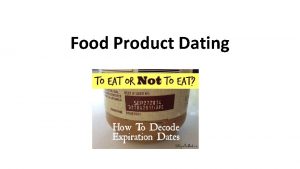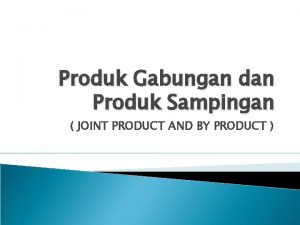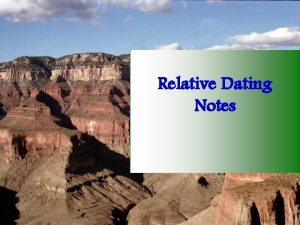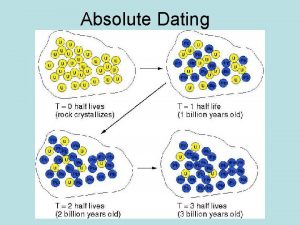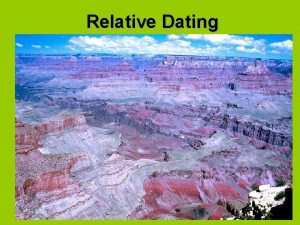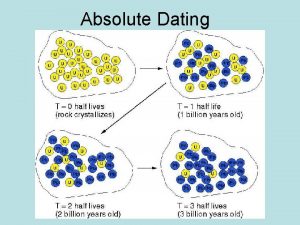Food Product Dating What is open dating Open







- Slides: 7

Food Product Dating

What is open dating? “Open Dating” (use of calendar date as opposed to a code) on a food product is a date stamped on a product’s package to help the store determine how long to display the product for sale. It can also help the purchaser to know the time limit to purchase or use the product at its best quality. It is not a safety date. Is dating required by federal law? What types of food are dated? • Except for infant formula, product dating is not required by Federal regulations. However, if a calendar date is used, it must express both the month and day of the month (and the year, in the case of shelf-stable and frozen products). If a calendar date is shown, immediately adjacent to the date must be a phrase explaining the meaning of that date, such as “sell-by” or “use before”. • Open dating is found primarily on perishable foods such as meat, poultry, eggs and dairy products. “Closed” or “coded” dating might appear on shelf-stable products such as cans and boxes of food. • There is no uniform or universally accepted system used for food dating in the United States.

Types of Dates • “Sell-By” – Tells the store how long to display the product for sale. You should buy the product before the date expires. • “Best if Used By (or Before)” – Date is recommended for best flavor or quality. It is not a purchase or safety date. • “Use-By” – Date is the last date recommended for the use of the product while at peak quality. The date has been determined by the manufacturer. • “Closed or coded dates” – Packing numbers for use by the manufacturer.

Safety After Date Expires • Except for “use-by” dates, product dates don’t always pertain to home storage and use after purchase. “Use-by” dates usually refer to best quality and are not safety dates. • Foods can develop an off odor, flavor or appearance due to spoilage bacteria. If a food has developed such characteristics, you should not use it for quality reasons. • If foods are mishandled, however, foodborne bacteria can grow and, if pathogens are present, cause foodborne illness – before or after the date on the package. • Other examples of potential mishandling: Products that have been defrosted at room temperature for more than two hours; cross-contaminated; or handled by people who don’t practice good sanitation.

Dating Infant Formula • Federal regulations require a “use-by” date on the product label of infant formula under FDA inspection. If consumed by that date, the formula or food must contain not less than the quantity of each nutrient as described on the label. Formula must maintain an acceptable quality to pass through an ordinary bottle nipple. If stored too long, formula can separate and clot the nipple. • The “use-by” date is selected by the manufacturer, packer or distributor of the product on the basis of product analysis throughout its shelf life, tests, or other information. It is also based on the conditions of handling, storage, preparation, and use printed on the label. Do not buy or use baby formula after its “use-by” date.

What do can codes mean? • Cans must exhibit a packing code to enable tracking of the product in interstate commerce. This enables manufacturers to rotate their stock as well as to locate their products in the event of a recall. • These codes, which appear as a series of letters and/or numbers, might refer to the date or time of manufacture. They aren’t meant for the consumer to interpret as “use-by” dates. • Cans may also display “open” or calendar dates. Usually these are “best if used by” dates for peak quality. • Canned foods are safe indefinitely as long as they are not exposed to freezing temperatures, or temperatures above 90 ⁰ F. If the cans look ok, they are safe to use. Discard cans that are dented, rusted, or swollen. High-acid canned foods (tomatoes, fruits) will keep their best quality for 12 -18 months; low-acid canned foods (meats, vegetables) for 2 -5 years.

Dates on Egg Cartons • Use of either “sell-by” or “expiration” (EXP) date is not federally required, but may be State required, as defined by the egg laws in the State where the eggs were marketed. Some State egg laws do not allow the use of a “sell-by” date. • Egg cartons with the USDA grade shield on them must display the “pack date” (the day that the eggs were washed, graded, and placed in the carton). The number is a three-digit code that represents the consecutive day of the year starting with January 1 as 001 and ending with December 31 as 365. When a “sell-by” date appears on a carton bearing the USDA grade shield, the code may not exceed 45 days from the date of pack. • Always purchase eggs before the “sell-by” or “EXP” date on the carton. After the eggs reach home, refrigerate the eggs in their original carton and place them in the coldest part of the refrigerator, not the door. For best quality, use eggs within 3 -5 weeks of the date you purchase them. The “sell-by” date will usually expire during that length of time, but the eggs are perfectly safe to use.

